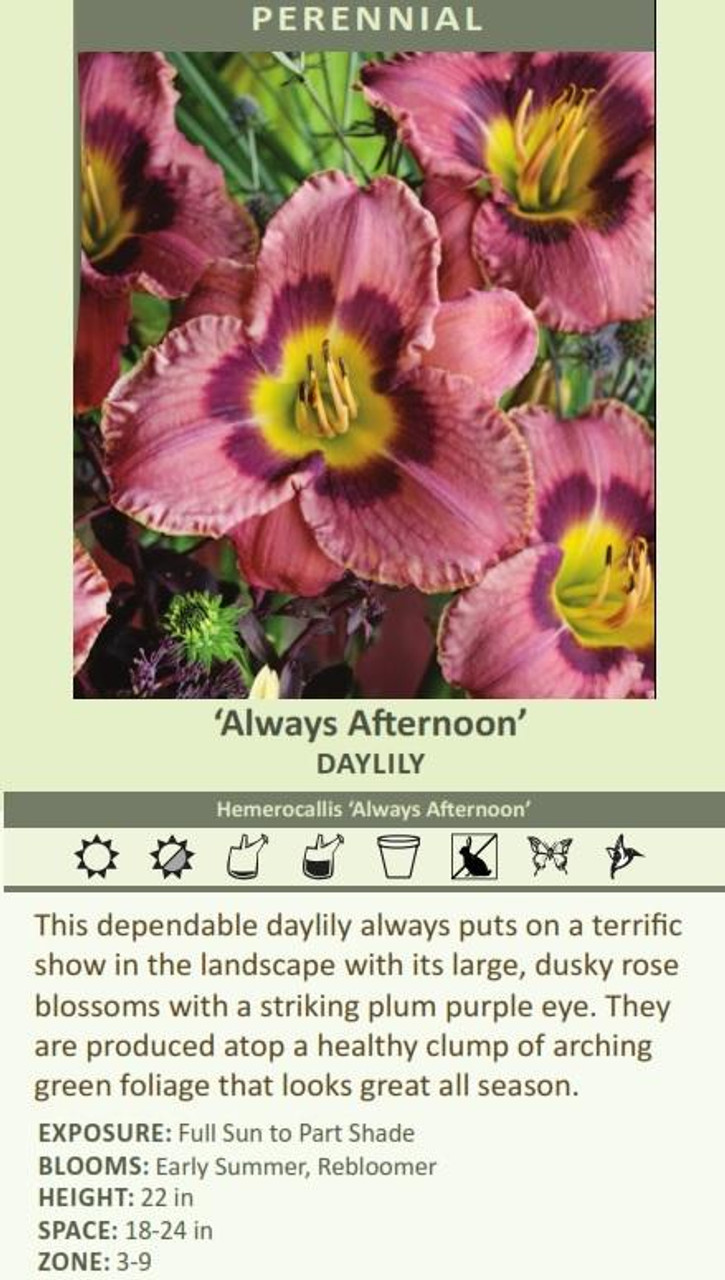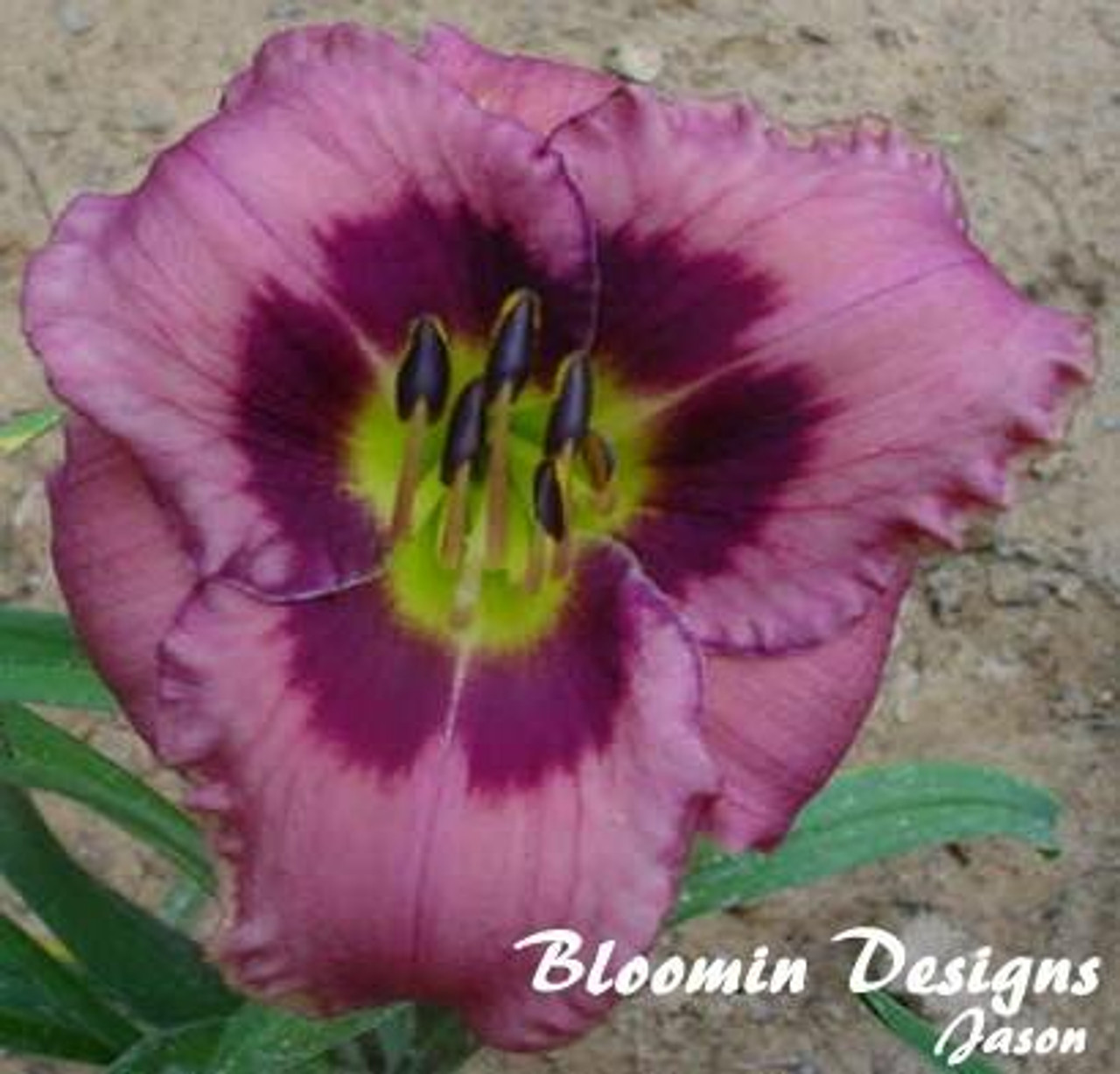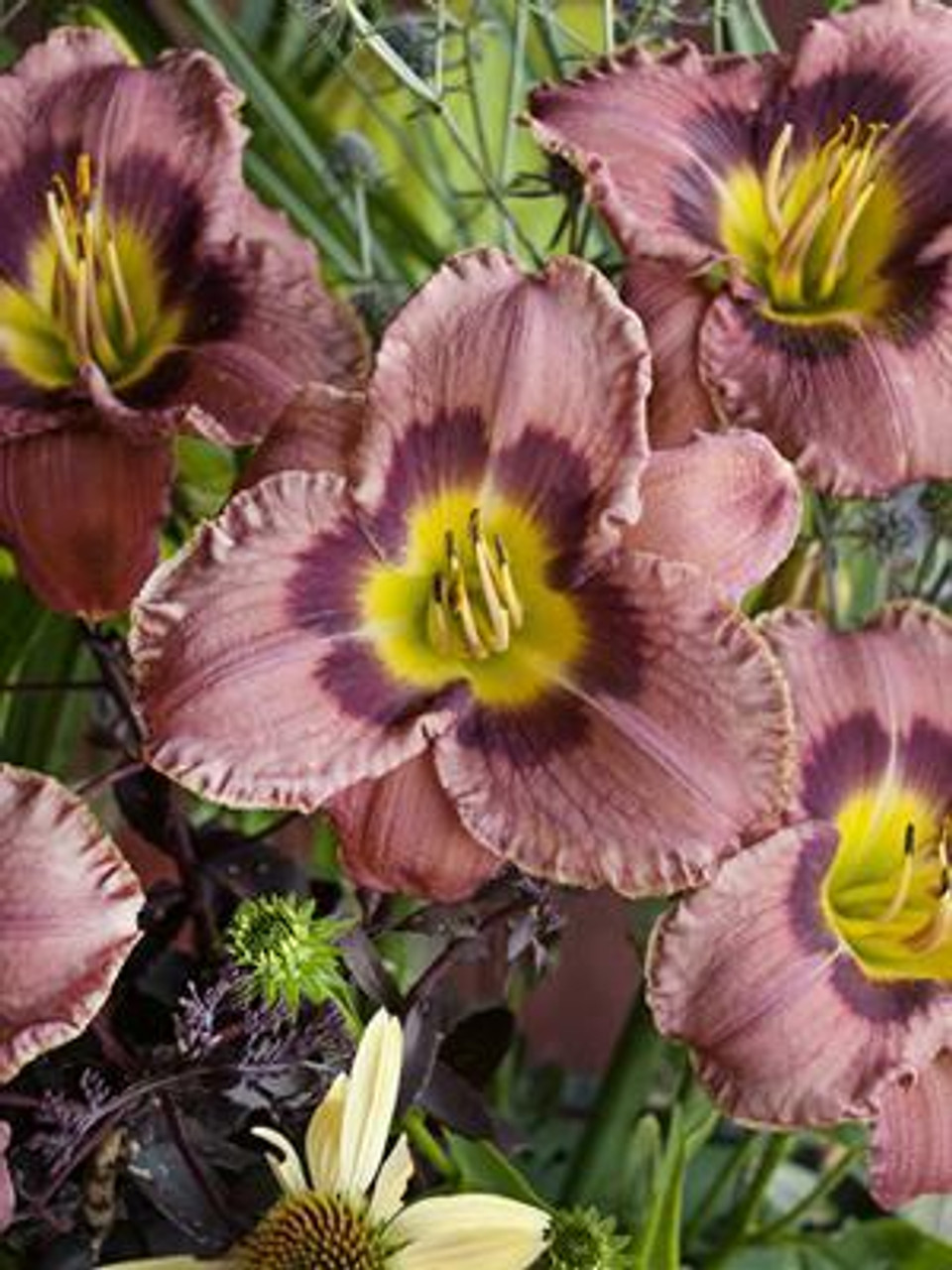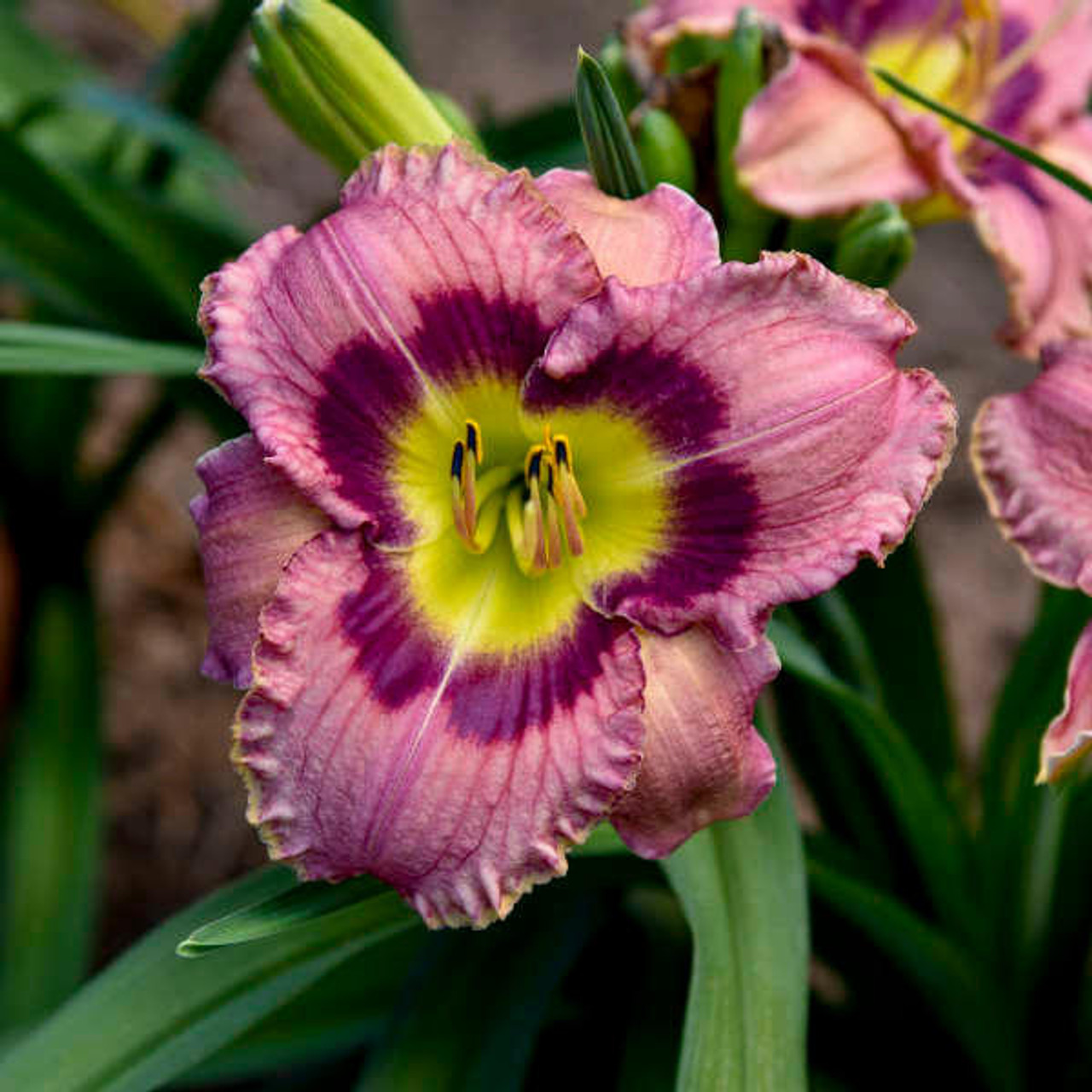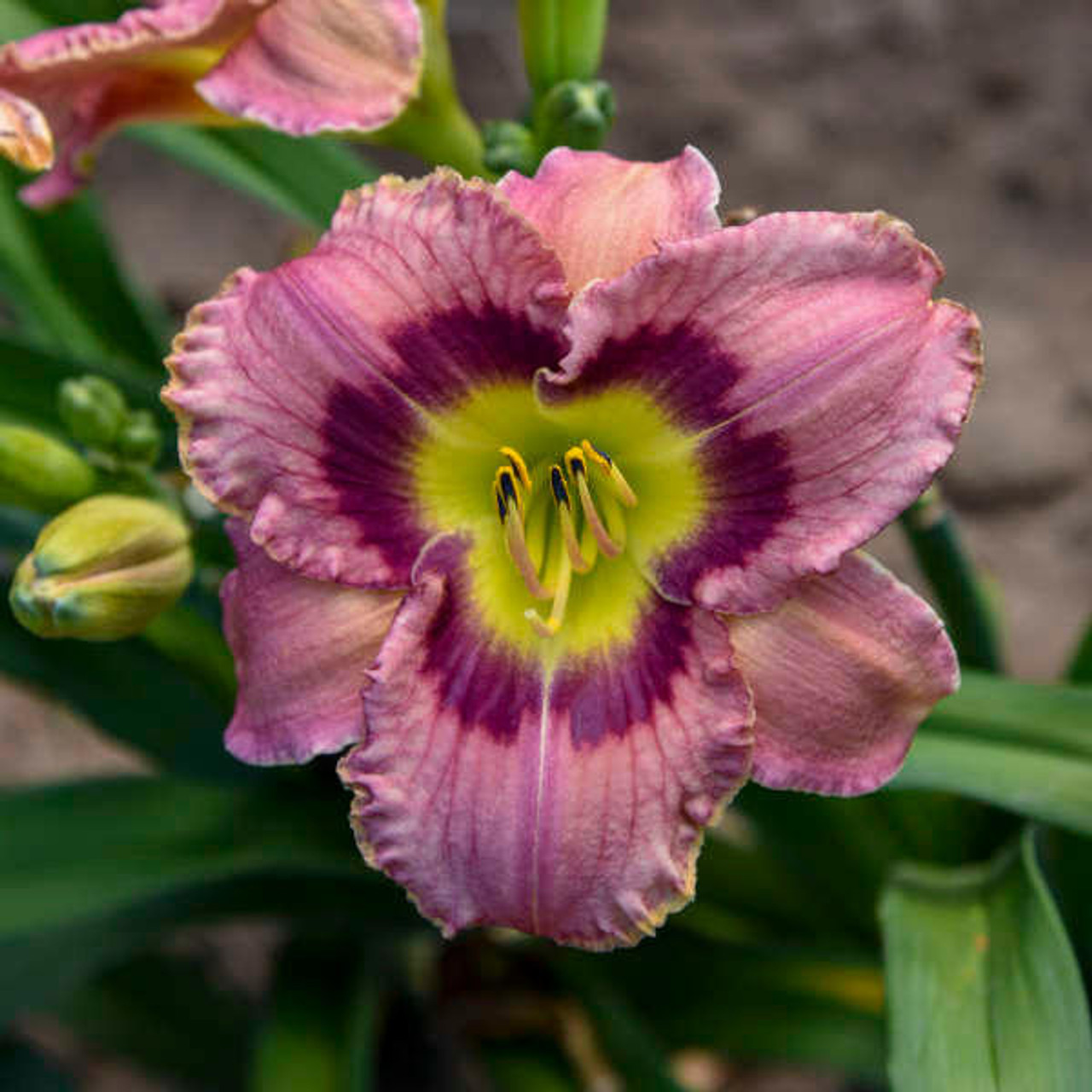Product Description
Hemerocallis 'Always Afternoon' (Morss 1987) (25) Bare Root Plants
Common Name: Daylily
- 5½", dusky rose self with a striking plum purple eyezone and a green throat
- Petals are crimped with thin buff pink edges, sepals are smooth
- Semi-evergreen foliage stays nice all season
- Grows equally well in the north and south
- Early Midseason Bloomer, blooming in early July.
- Rebloomer, producing a second set of flowers.
- Extended Bloom with flowers staying open at least 16 hours.
- Semi-Evergreen foliage.
- Tetraploid with 44 chromosomes.
Parents: (RING OF CHANGE x TIFFANY PLACE) x OPUS ONE.
American Hemerocallis Society Silver Stout Medal (AHS highest honor) -- 1997
American Hemerocallis Society Don C. Stevens Award (Best eyed cultivar) -- 1993
Royal Horticultural Society's Award of Garden Merit -- 2012
American Hemerocallis Society Award of Merit (Outstanding beauty and performance over a wide area of the country) -- 1995
American Hemerocallis Society Popularity Poll (Conducted annually to determine the favorite daylilies among AHS members from each region of the country)
Height: 22 inches
Spread: 18.0-24.0 Inches
Hardiness Zones: 3,4,5,6,7,8,9
Flower Color: Pink shades
Foliage Color: Green shades
Full Sun (> 6 hrs. Direct Sun) - Part Shade (4-6 hrs. Direct Sun)
Low to Average Water Needs
Poor to Fertile Soil Quality
Bloomtime: Early Summer, Rebloomer
Attracts Butterflies and Hummingbirds
Bee Friendly
Rabbit Resistant
Growth Rate: Medium
Border Plant, Container, Easy To Grow, Fragrant Flowers, Mass Planting, Salt Tolerant
Hemerocallis 'Always Afternoon' is a captivating daylily cultivar that brings a touch of elegance and vibrant color to gardens. This reblooming daylily, with its large, intricately patterned flowers and extended bloom time, is a favorite among gardeners for its beauty and resilience.
Distinctive Features 'Always Afternoon' showcases large, 5.5-inch wide, raspberry-pink flowers with a striking plum-purple eyezone and a green throat. The petals have crimped edges with thin buff-pink margins, while the sepals are smooth. The flowers open in the morning and typically last at least 16 hours, providing a long-lasting display of color. This cultivar is semi-evergreen, meaning its foliage remains attractive throughout the growing season.
Care and Cultivation Hemerocallis 'Always Afternoon' thrives in full sun or part sun and prefers average, moist, well-drained soils. It is adaptable to a wide range of soil types, including acidic, clay, loamy, and sandy soils. This daylily is known for its hardiness and ability to tolerate various conditions, including polluted city environments, slopes, poor and dry soils, and areas near pavement that is salted in winter.
Planting The best time to plant 'Always Afternoon' is in early fall or early spring. When planting, ensure the top of the plant is level with the soil surface and space plants 24 inches apart.
Watering 'Always Afternoon' has average water requirements. Water regularly, especially during dry periods, but avoid overwatering, which can lead to root rot.
Fertilizing Fertilize once or twice a year in spring and/or fall.
Pruning After flowering, remove spent blooms and seedpods to improve the appearance and encourage rebloom. When all the flowers on a scape (flower stalk) are finished, cut off the scape close to ground level. Remove dead foliage from daylilies as they die back in the fall.
Winter Care In colder climates, mulch the plant during the winter to protect it from freezing temperatures. Remember to remove the mulch in spring before new growth begins.
| Companion Plant | Benefits/Characteristics |
| Achillea 'Inca Gold' (Yarrow) | Adds a vibrant contrast with its golden-yellow flowers |
| Geranium 'Johnson's Blue' (Cranesbill) | Provides a cool blue contrast to the warm tones of 'Always Afternoon' |
| Coreopsis verticillata 'Moonbeam' (Threadleaf Coreopsis) | Creates a delicate texture with its fine foliage and soft yellow flowers |
| Echinacea purpurea 'Magnus' (Coneflower) | Adds a bold touch with its large, rosy-purple flowers |
Landscape Uses Hemerocallis 'Always Afternoon' is a versatile plant that can be incorporated into various garden settings:
- Borders: Its vibrant flowers and semi-evergreen foliage make it an excellent addition to perennial borders.
- Cottage Gardens: Its informal charm blends seamlessly with other flowering perennials in cottage gardens.
- Ground Cover: Its spreading habit makes it suitable for use as a ground cover on slopes or in areas where erosion control is needed.
- Containers: 'Always Afternoon' can also be grown in containers, allowing you to bring its beauty to patios, balconies, or any sunny spot.
Hemerocallis 'Always Afternoon' is a captivating daylily cultivar that offers a unique combination of beauty, resilience, and versatility. With its large, intricately patterned flowers, extended bloom time, and adaptability to various conditions, 'Always Afternoon' is sure to become a cherished addition to any garden.
Other Details
The most important part of the plant is its root system. Healthy roots are the foundation of a healthy, vibrant plant. The type of plug container used is based on the specific needs of the plants. Perennials offered as bare root traditionally perform better when planted as bare root.Planted in a specialized mix, potted plants have well established root systems. Top growth stage will vary depending on the current life cycle and time of year when shipped. In Winter and early Spring dormant plants may be shipped. Dormant plants may be planted right away, even before the last frost date.
Most bare root varieties are field grown for at least one season, though Hemerocallis and Hosta are grown for two seasons. The bulk of the soil is removed during the harvesting process and the tops of most varieties are trimmed back to the crown. They are graded, packed in shredded aspen or sphagnum moss and stored in freezers until ready to be shipped.
See our Container Sizes and Bare Root Perennials pages for more information.
Plant information and care is provided in the Overview section, Plant Genus Page and general information is provided in the Planting Care & Guides. Additional questions can be asked on each Plant page.
Plant Spacing: Using the maximum mature spread or width of a plant to guide spacing, ensures space to grow to full size. To fill an area sooner, plant them closer together. Just remember, future thinning or transplanting may be needed.
Water: Keep a close eye on newly planted perennials, especially throughout the first growing year. Most early plant loss is due to too much or too little water!

